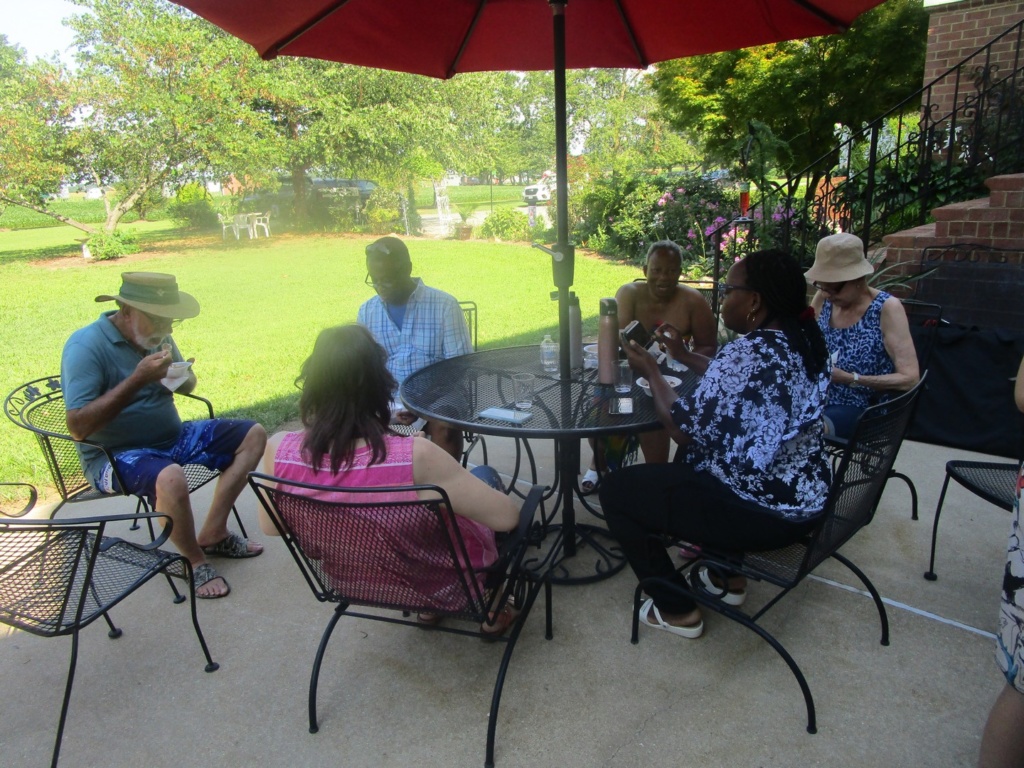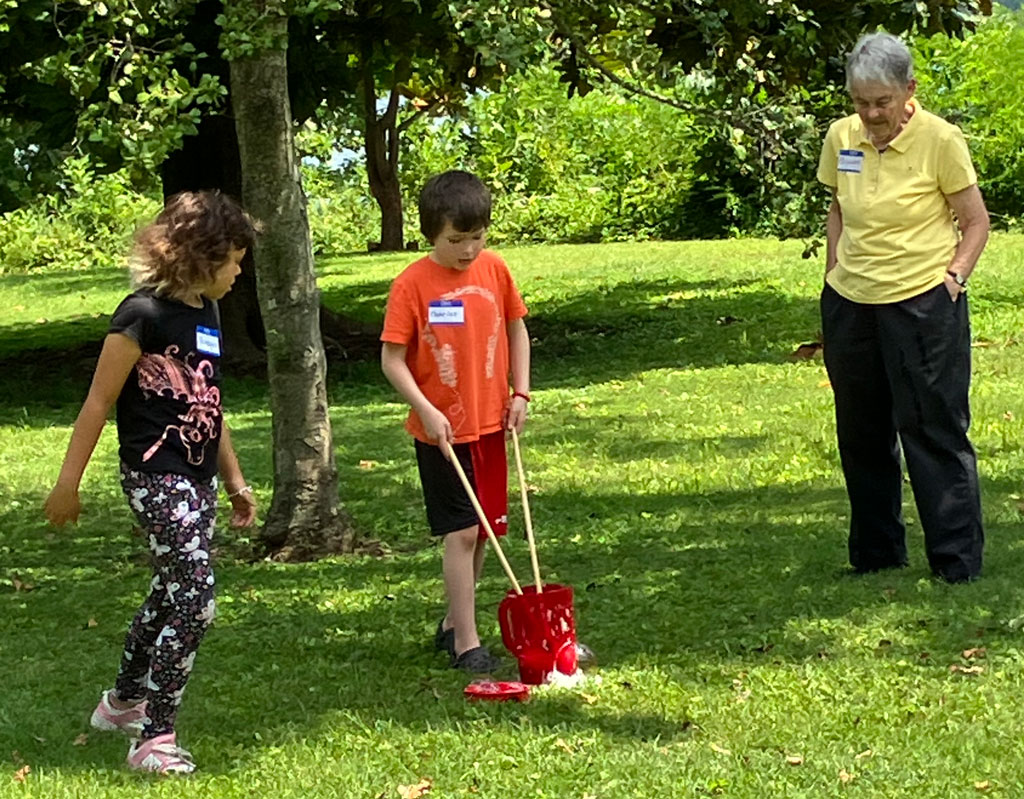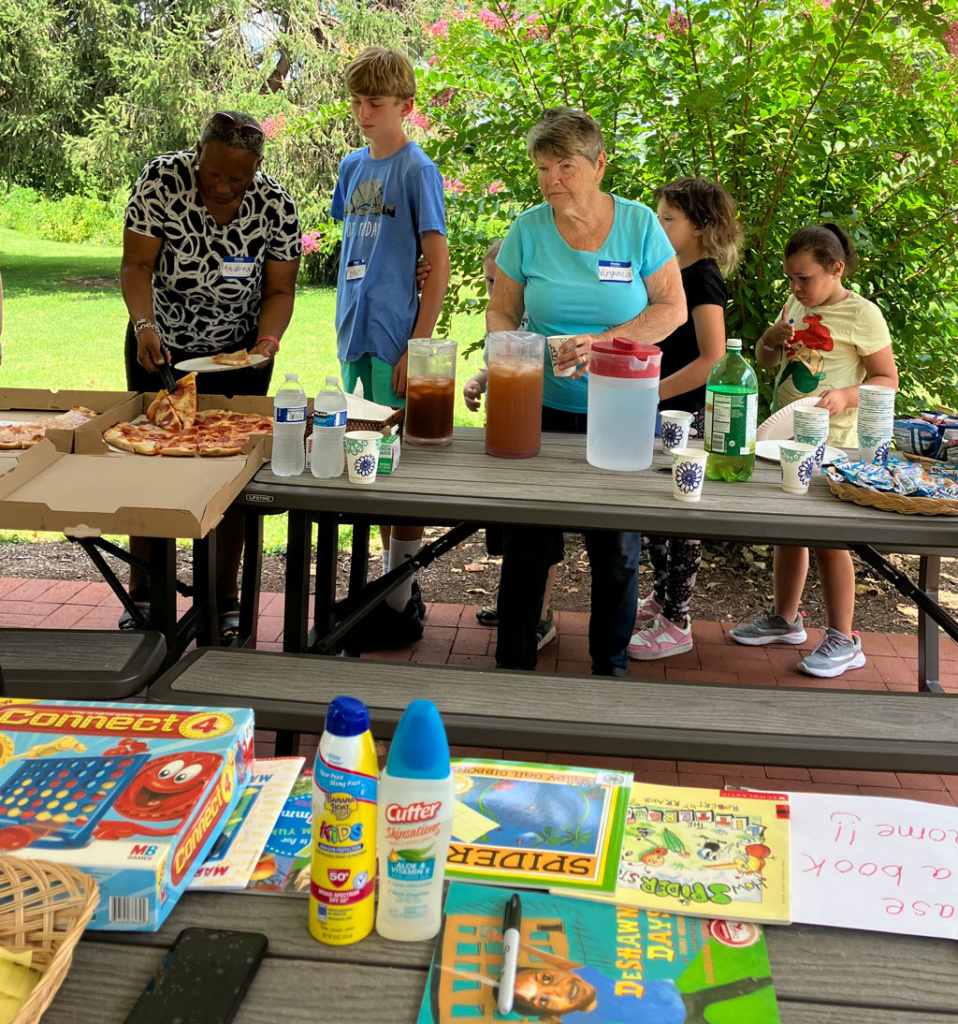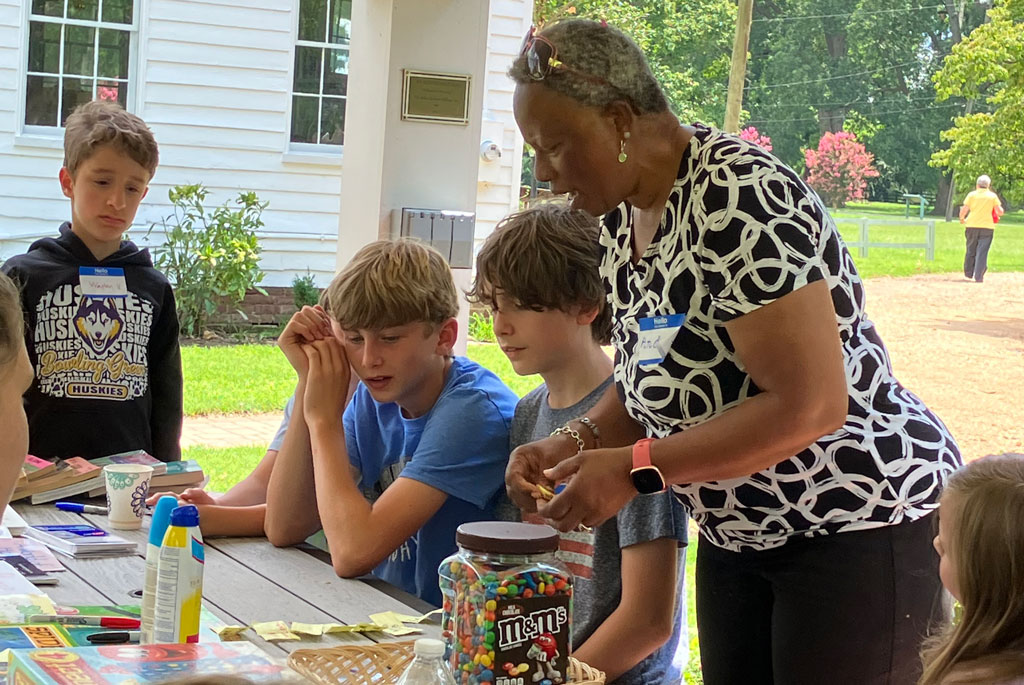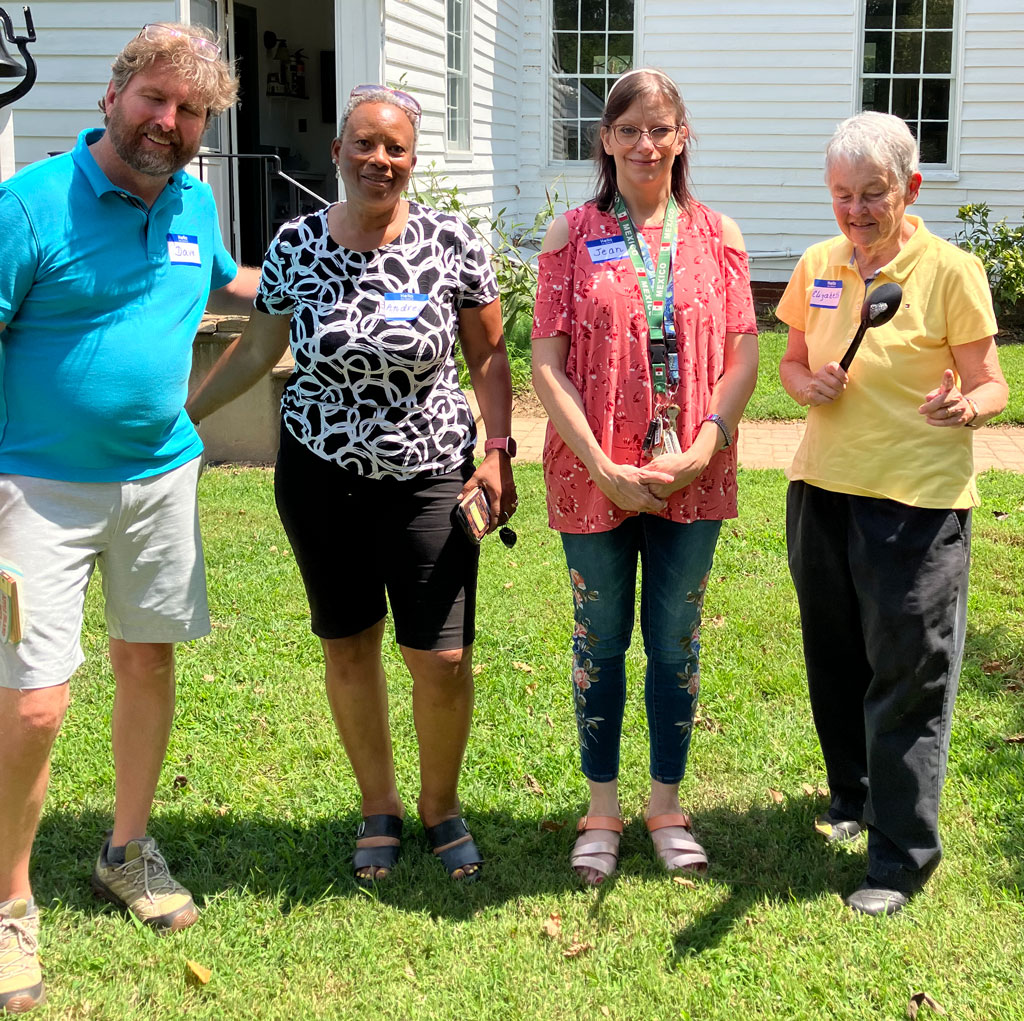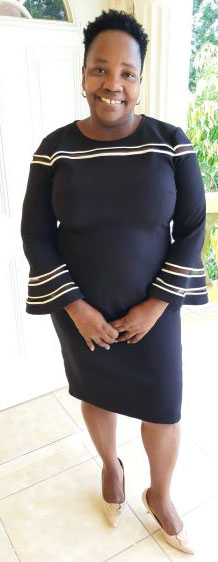The Youth end of summer came to the Davis household on Aug 13 at 2pm. School begins this week. Instead of a blessing of back packs, the focus was on water – the waters of baptism and the waters for recreation. They first discussed baptism. Most could not remember their baptism so it was appropriate for Catherine to lead them in the renewal of their baptism vows. They discussed the differences between John the Baptism focus on repentence and Jesus baptism with the Holy Spirit.
Swimming was next on the agenda. Since it was a hot day, the water was refreshing, even for Jack, the Davis dog.
About 4pm there was an ice cream social – making your ice cream in a bowl and or cone. There were at least 5 flavors of ice cream. After this there were games – a bean bag game, in particular. The hummingbirds fluttering around were a visual treat. We learned how much sugar and water was needed to keep them happy.
The party concluded at 5pm. Time for school!






